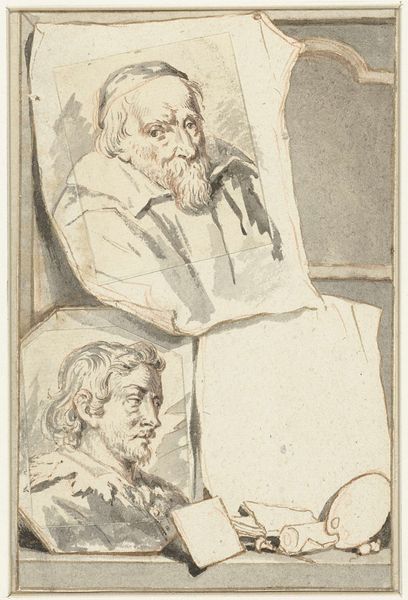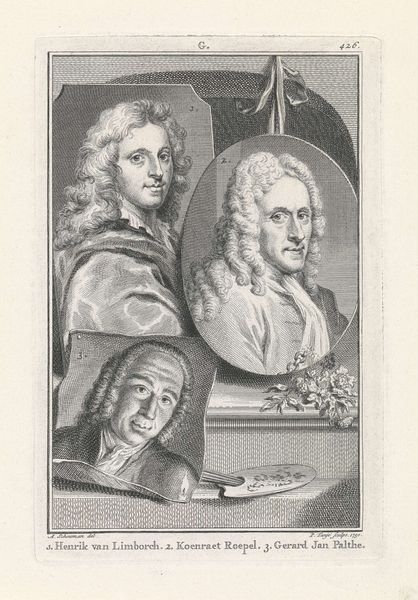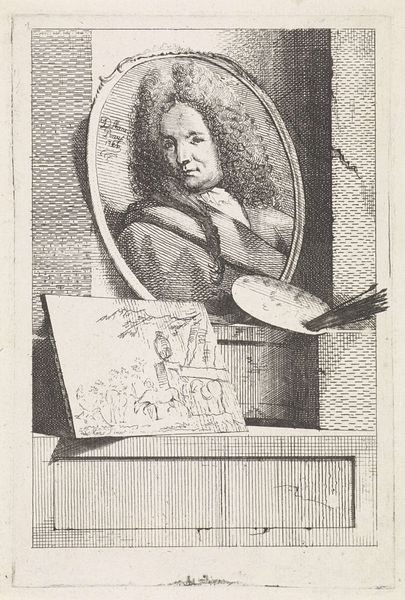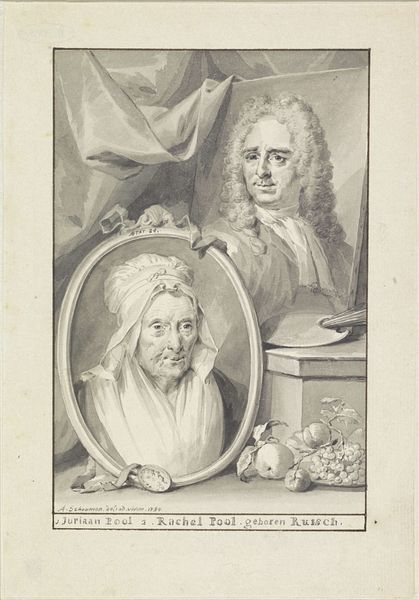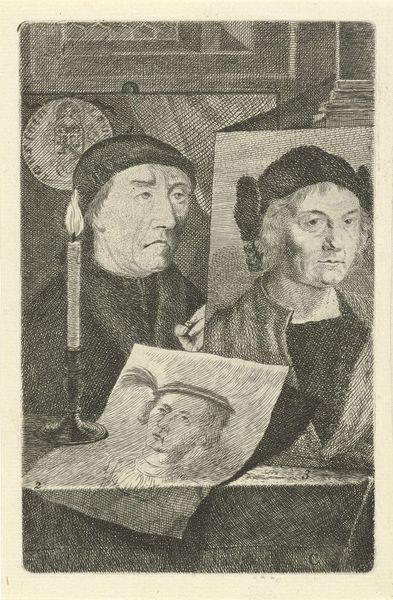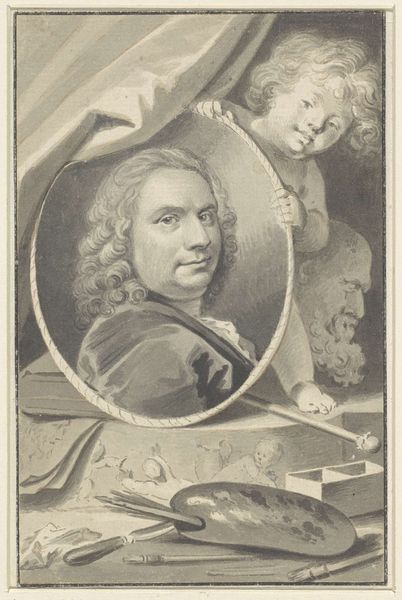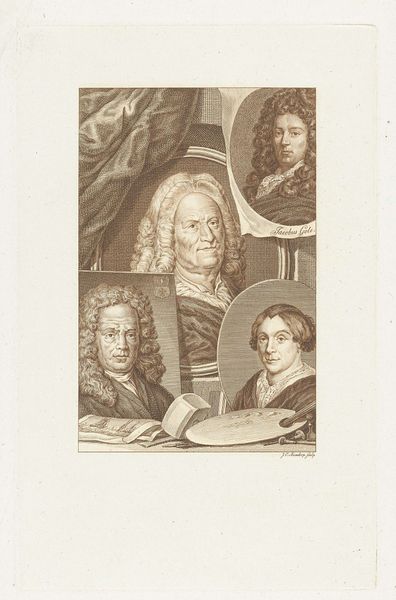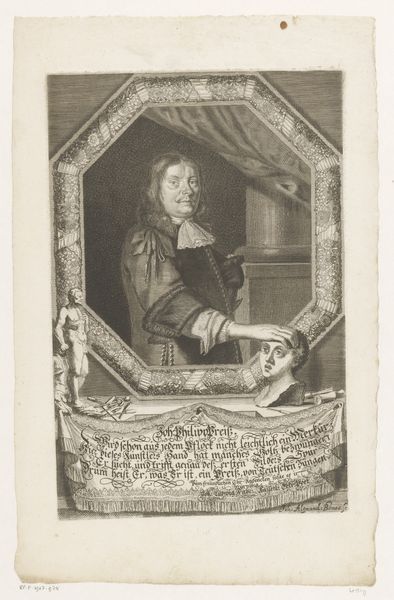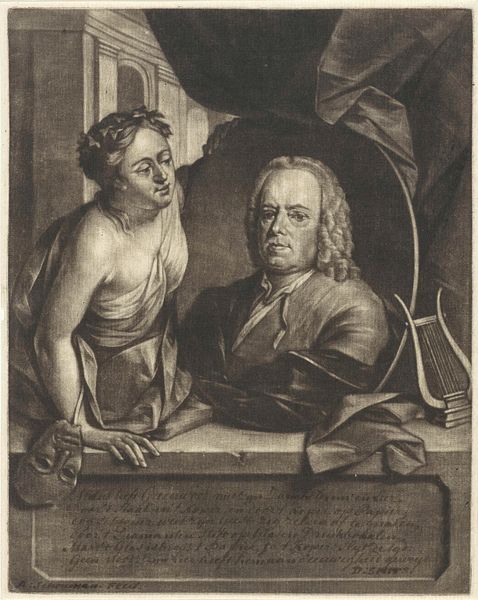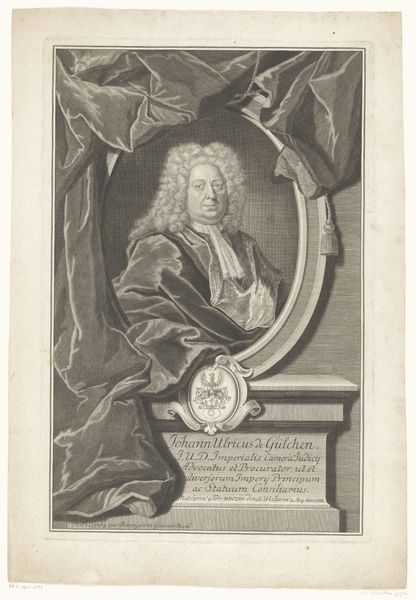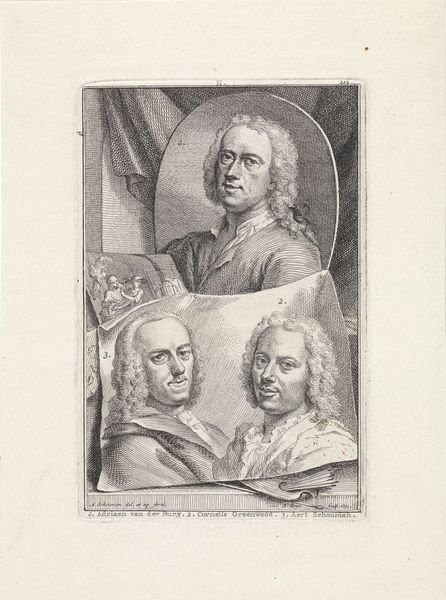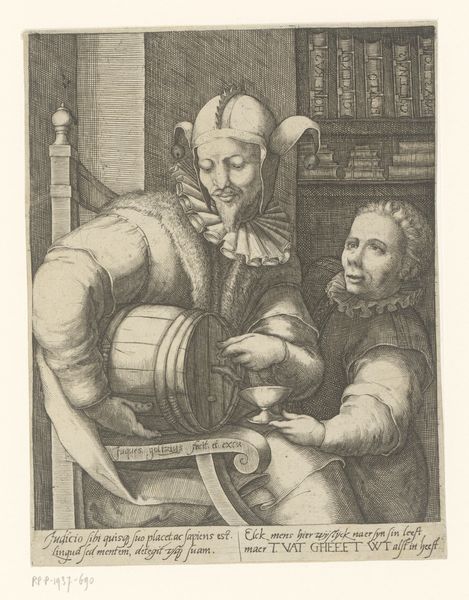
engraving
#
portrait
#
baroque
#
dutch-golden-age
#
old engraving style
#
history-painting
#
engraving
Dimensions: height 161 mm, width 108 mm
Copyright: Rijks Museum: Open Domain
Curator: Jacob Houbraken etched this double portrait in 1751. Titled "Portret van Willem en Frans van Mieris", it depicts the two artists within what looks like a carefully staged artist’s studio. Editor: There’s a curious stillness to it, almost austere. The monochrome palette and the precise lines create a formal atmosphere, yet there’s also an intimacy in the way the brothers are portrayed, separated but connected within the same space. Curator: Absolutely. Consider the materials—engraving allowed for the wide dissemination of imagery and ideas. Houbraken was instrumental in shaping the visual record of Dutch artists, effectively crafting a historical narrative through accessible prints. His engravings weren't just copies, they were vital for establishing and cementing artistic reputations, and of course generating an income. Editor: Yes, and it raises questions about artistic lineage and legacy. Frans, the younger brother, is shown on a loose sheet, seemingly less grounded than Willem whose portrait is mounted in a frame as a bust. I wonder if this deliberate choice reflects the social expectations and structures prevalent at the time? Gendered representation perhaps? Considering that artistic dynasties were often male dominated. Curator: That’s a sharp observation! Notice, too, how tools of the trade – a palette, an inkwell – are meticulously arranged. They serve as concrete reminders of artistic production, underscoring the labour and skill involved, especially when painting was gaining recognition. This connects the print to the physical act of creating, highlighting the hand and craftmanship needed to be a painter. Editor: And I see a tiny rendering next to Willem; I imagine they also reference history painting, a tradition to which these brothers belong. Considering history painting as it attempts to solidify power and narrative… I feel it also mirrors something in these two faces – Willem's looks worn, weathered. Curator: In short, it's an image embedded in a nexus of production, circulation, and reception, isn't it? Editor: Yes. And when looked at more closely it helps us think about whose stories were prioritized. Curator: It reminds us how important it is to look deeper at our own relationship with both the tools and results of art production today. Editor: Indeed, and the narratives they create.
Comments
No comments
Be the first to comment and join the conversation on the ultimate creative platform.
